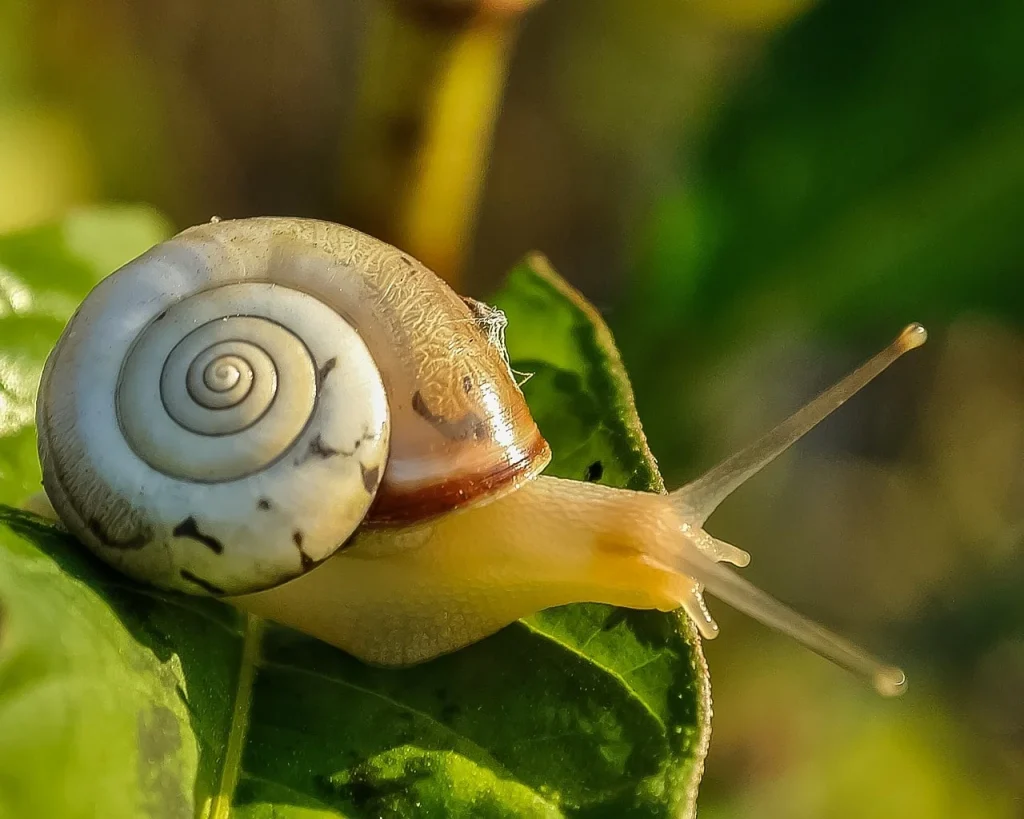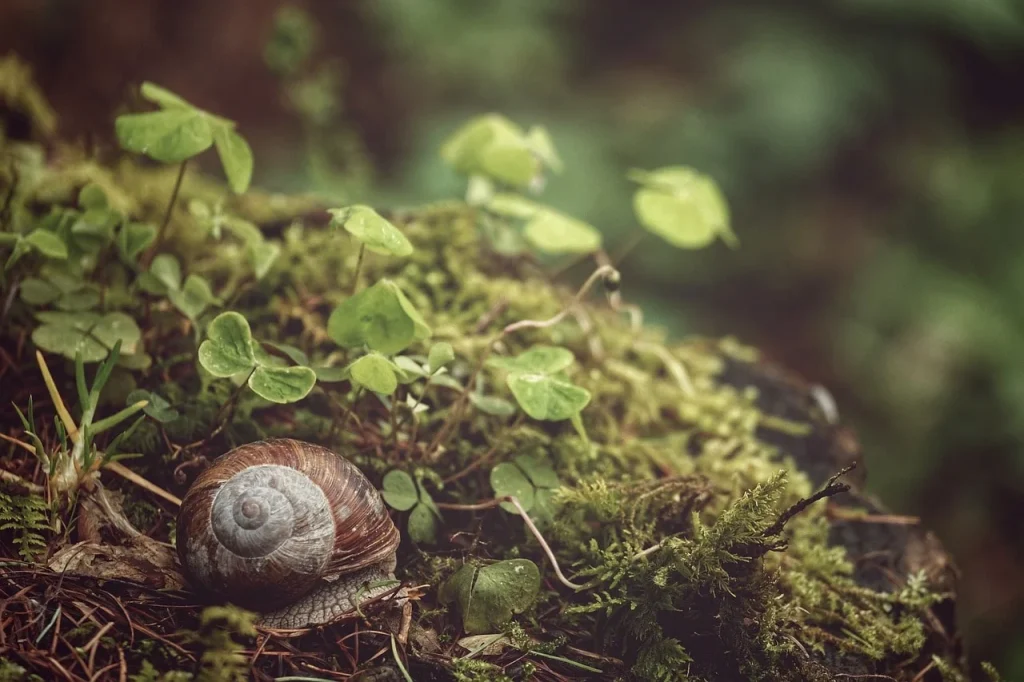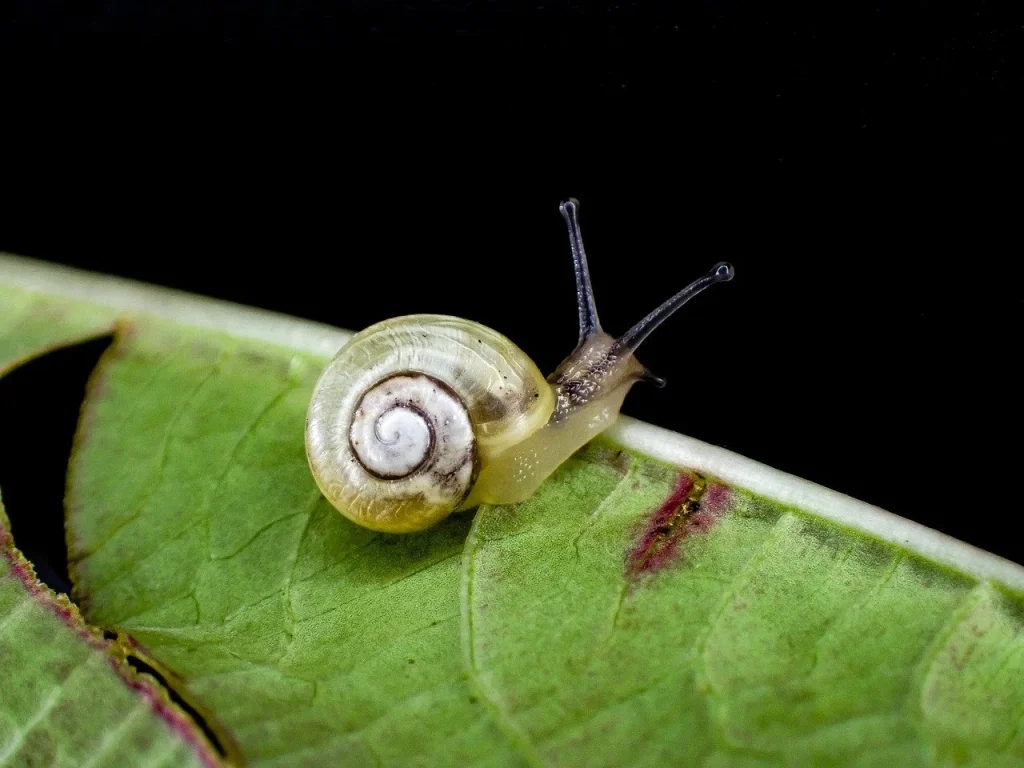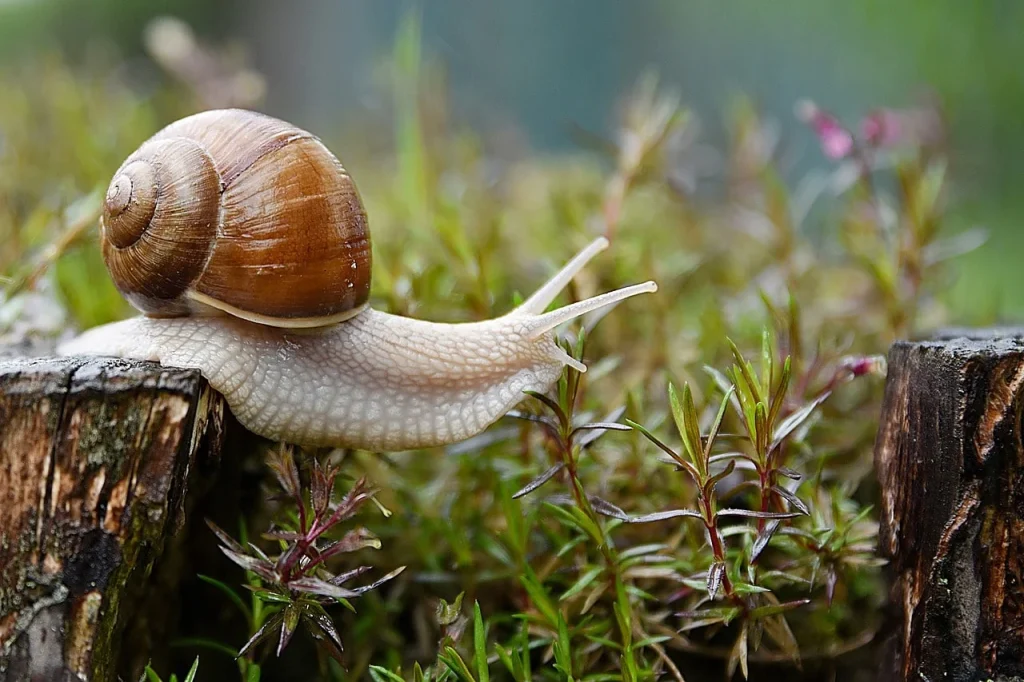What do you know about snails besides their slow movement and spiral shells? Most people see them simply as garden dwellers or aquarium additions, but snails are much more interesting than you might think.
In this blog, you will discover some fascinating facts about snails, shedding light on their mysterious lives and abilities. From their impressive survival skills to their varied habitats around the world, prepare to be amazed by the world of snails.
By perseverance, the snail reached the ark.
Charles Spurgeon
Snail Facts
We start our fascinating journey through the world of snails, but keep in mind that there’s a quiz waiting at the end of this page. Read each detail carefully to prove your expertise on these creatures!
- Some species can sleep for up to three years during periods of drought.
- They have the ability to regenerate their eye if it gets damaged.
- A single garden snail can produce up to 430 offspring in its lifetime.
- Their mucus has medical properties and is used in skin creams and treatments.
- Snails can move at a maximum speed of about 1.3 centimeters per second.
- Their teeth are located on the tongue which functions like a file.
- These creatures have been around since the Late Cambrian period, over 500 million years ago.
- Despite their slow speed, they are excellent at navigating complex terrain.
- Chemicals from the mucus are used in products to help treat stomach ulcers.
- A group of these animals is known as a route or escargatoire.
- Some can live up to 25 years in captivity, though wild lifespans are much shorter.
- The largest species can grow up to 12 inches in length.
- They have been carried as accidental passengers on ships and planes, spreading to almost every continent.

- They are able to switch the hardness of their mucus depending on environmental conditions.
- Their shells are mathematically consistent and adhere to logarithmic spiral rules, which are common in nature.
- Many species are hermaphrodites, possessing both male and female reproductive organs.
- They rely on a strong sense of smell to navigate and find food, as their vision is quite poor.
- Their blood is green due to a copper-based compound called hemocyanin, which serves a similar function to hemoglobin in humans.
- When they eat, they grind their food using thousands of microscopic teeth.
- They can climb vertical surfaces and even hang upside down thanks to their sticky mucus.
- A rare genetic condition can cause a snail’s shell to coil in the opposite direction, making it difficult for them to mate.
- In some cultures, they are considered a delicacy and eaten as a high-end dish.
- During mating, some species use a love dart made of calcium to increase reproductive success.
- Snails can absorb minerals through their skin to help build their shells.
- Their ability to hibernate and estivate allows them to survive extreme environmental changes.
- Several species are endangered due to habitat loss and pollution.
- They are known to practice cannibalism when food is scarce.
- Fossil records show that their ancestors were among the first to leave the sea for land.

- Some species excrete a hard epiphragm over their shell’s opening to seal themselves in during dry periods.
- They are capable of learning simple tasks through conditioning, demonstrating a primitive form of memory.
- Antarctica is one of the few continents where snails have not naturally colonized.
- The smallest species are just a few millimeters long when fully grown.
- Snail farming, or heliciculture, is a growing industry in many parts of the world.
- They have been used in traditional medicine to treat coughs and digestive issues.
- Giant African snails are considered one of the most invasive species worldwide due to their high reproductive rate and voracious appetite.
- Their shells spiral due to the unequal growth rates of the shell’s edges, a phenomenon described by D’Arcy Thompson’s growth equations.
- Blue-dyed snail mucus is under research for potential use in anti-aging skin treatments.
- Some snails have been observed using decoys to distract predators, a rare behavior in invertebrates.

- Their sense of taste is more developed than that of many other invertebrates.
- When moving, they leave behind a trail of mucus to help them return to familiar territories.
- They can be right or left-handed, depending on the coiling direction of their shell.
- The shells of some species are used by certain types of hermit crabs, who cannot build their own shells.
- They can transfer environmental toxins from their diet into their mucus, which can be a hazard to their predators.
- Predators of snails include birds, small mammals, and even other species of snails.
- Under ultraviolet light, some species’ mucus glows, which scientists believe could deter predators.
- Certain proteins found in their mucus have been identified as potential aids in repairing human cells and tissues.
- Roman snails were so prized in ancient Rome that special laws protected their collection.
- Unique to some species, their shell-opening can be sealed with a gel-like substance during hibernation to prevent dehydration.
- Their ability to survive extreme conditions has made them subjects of interest in space biology studies.
- Some aquatic species use a form of jet propulsion by rapidly expelling water from their mantle cavity to move.
Snail Myths

Now that we’ve covered the facts, let’s continue to separate the truth from the myths about snails. It’s time to dispel some common misconceptions and shed light on reality.
- Snails Can Regrow Their Shells Like Crabs Regrow Claws
Unlike crabs, snails cannot regrow their shells if they are damaged. The shell is grown from the mantle tissue as the snail matures and is not capable of regeneration once it’s fully formed. - All Snails Are Slow
While generally perceived as slow, some aquatic snails are known to move quickly through water. Their speed is enhanced by the currents and the medium in which they are traveling. - Snails Are Pests and Offer No Benefit
Contrary to this belief, they play a significant role in ecosystems. Decomposition of dead plant material is facilitated by them, enriching soil fertility and supporting the nutrient cycles. - Snails Can Survive in Any Environment
Specific humidity and temperature ranges are required for snails to thrive. Their survival is compromised in environments that do not meet these conditions, making them more sensitive than is often assumed. - Snails Have Simple, Primitive Nervous Systems
A complex set of behaviors and memory capabilities are exhibited by snails, indicating a more sophisticated nervous system than traditionally believed. Their ability to learn and adapt is especially noted in studies.
No products found.
Snail Quotes

We continue with a collection of quotes that reveal the surprising strength, resilience, and quiet wisdom attributed to these remarkable creatures.
Nature does not hurry, yet everything is accomplished.
Lao Tzu
Lao Tzu emphasizes patience and the natural, unhurried pace of life’s processes, with the snail often symbolizing this principle.
The snail slithers on the razor’s edge.
Proverb
This proverb highlights the delicate balance and risk in life’s journey, using the snail’s slow, vulnerable movement as a metaphor.
I am like a snail. I carry my delicate house on my back and curl up into it when life is too hard.
Anna Held
Anna Held compares herself to a snail to express how she manages vulnerability and self-protection in a challenging world.
Success is the sum of small efforts, repeated day in and day out.
Robert Collier
Robert Collier’s quote reflects on the incremental nature of achieving success, akin to the slow but sure pace of a snail.
Consider the snail: secure in its shell, it knows a quiet and private life.
Marty Rubin
Marty Rubin reflects on the snail as a symbol of solitude and the choice to lead a life shielded from external tumult.
Snail FAQ

As we slide toward the final stretch of our exploration, the upcoming FAQ section will clarify any lingering questions you might have. Pay close attention, as this is the last section before the quiz that follows.
- What do snails eat?
They are mostly herbivores and enjoy a diet of leaves, stems, fruits, and flowers. Some species are omnivorous and may also eat decaying organic matter or even other snails. - Can snails live in water?
Yes, many snail species are aquatic and thrive in water environments, both freshwater and marine. However, there are also many terrestrial snails that live on land. - Are snails born with shells?
Yes, they hatch from their eggs with a very soft shell, which hardens with calcium as they grow. The shell grows with them throughout their lives. - Are snails bugs?
No, they are not bugs. Snails are mollusks, which means they belong to a different group of animals than insects or bugs. - Can snails hear?
They do not have ears or ear structures like many animals, but they can sense vibrations through their bodies, which helps them respond to their environment.
No products found.
Snail Trivia

Ready, set, slow! It’s time for the ultimate snail quiz. Miss all the questions, and you’ll be sentenced to a week of snail-speed internet!
Snail Merch
If you are a true fan of snails, then you definitely need to check out our merchandise. You can find T-shirts, hoodies, mugs, and tote bags for your favorite designs. Feel free to check out all the other designs in our shop.
Conclusion
To sum up, snails offer us a glimpse into the resilience and complexity of nature. These small creatures carry their homes on their backs and face the world with remarkable adaptability. They are not just slow—they are survivors, equipped to overcome challenges in their environments.
They remind us of the delicate balance of ecosystems and our role in protecting them. Let’s keep our curiosity alive and our gardens welcoming for these little adventurers. Till next time, stay curious and explore more. Cheers.


